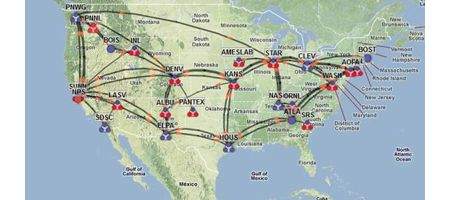The US Department of Energy will next month demonstrate an upgrade to the ESnet academic network that will take its speed up to 100 Gbps.

The project – funded with $62 million raised through the 2009 economic stimulus law – is intended for research use but could pave the way for widespread commercial use of similar technology, the department says.
“While this breakthrough will make sharing information between our labs much more efficient, its potential goes far beyond that,” says secretary of energy Steven Chu.
“This faster speed at which data can be shared could pioneer the next era of internet innovations, changing and improving our lives much like the original commercialization of the internet did in the mid-90s.”
The improvements will make the network about 10,000 times faster than, say, a standard cellphone connection, allowing 20 years worth of data from the Hubble space telescope to be downloaded in as little as an hour.
The Energy Sciences Network (ESnet) connects thousands of DOE researchers at more than 40 different national laboratories and supercomputing facilities, and links them to research partners around the world.
The improved speed will be made available to the DOE’s three supercomputing centers at Argonne, Oak Ridge, and Lawrence Berkeley National Laboratories over the next few months.
By the end of 2012, says the DOE, it should to link all of the DOE national lab sites.
There’s an element of familiarity about the project. The web itself, after all, originated with high energy physicists at CERN who needed a better, faster way to share their data. Energy Department laboratories like Fermilab and the Stanford Linear Accelerator were amongst its earliest pioneers.





